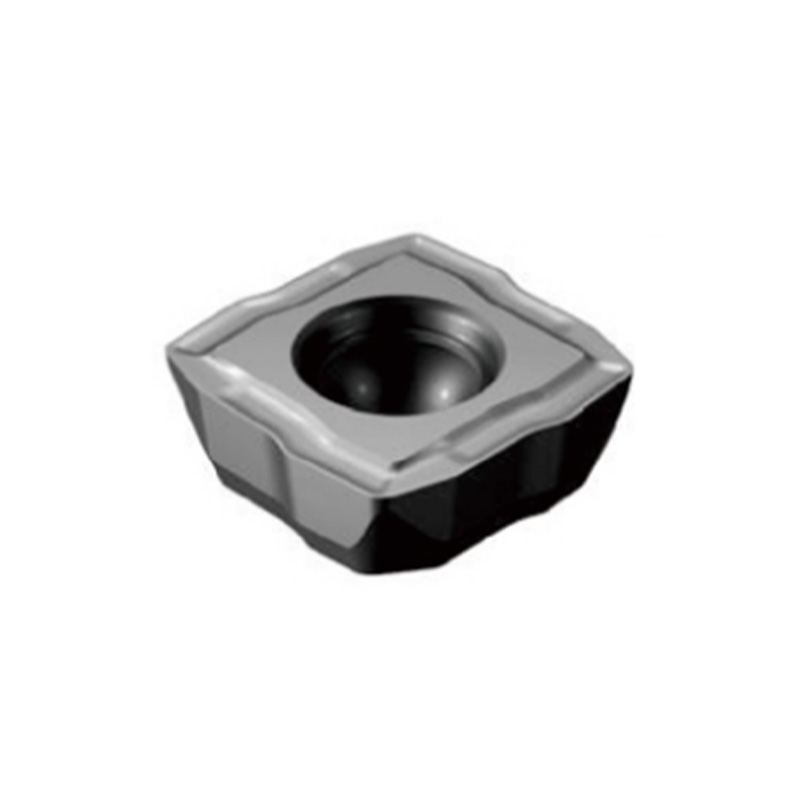How do Carbide Inserts Solve Traditional HSS Insert Flaws and Become Core Tools in the Processing Industry?
2025-10-10
In fields such as metal cutting, wood deep processing, and stone carving, enterprises have long been troubled by the drawbacks of traditional high-speed steel (HSS) inserts—prone to wear, short service life, and low processing efficiency. Carbide inserts, with their characteristics of "comprehensive performance and strong adaptability," have become the core tool in the processing industry. Their five core advantages significantly reduce the frequency of downtime for tool changes and lower overall production costs.

1. High Hardness & Chipping Resistance: Adapting to High-Strength Processing
Carbide inserts use tungsten carbide as the core base material, with a hardness of HRA 90–93 (far exceeding HSS’s HRA 60–65), enabling them to withstand high-strength cutting pressure:
When cutting difficult-to-process materials such as stainless steel and high-strength alloys, they rarely experience chipping or edge rolling. For example, when processing 304 stainless steel pipe fittings, carbide inserts can stably cut workpieces with a hardness of HB 200–250, solving the problem of traditional inserts that "chip after cutting only 3–5 workpieces" and ensuring processing precision.
2. Strong Wear Resistance: Reduces Tool Changes and Improves Operational Efficiency
Carbide inserts are manufactured using a powder metallurgy process and have a wear resistance 3-5 times greater than high-speed steel inserts.
In wood processing, when cutting hardwoods with a density of 0.8-1.0 g/cm³ (e.g., oak and walnut), a single carbide insert can continuously process 500-800 meters, while a conventional high-speed steel insert can only process 80-120 meters. This reduces tool change frequency by 70% and minimizes downtime.
3. High-Temperature Resistance & Anti-Softening: Adapting to High-Speed Processing
Carbide inserts have very good high-temperature resistance. They keep stable performance at temperatures of 800–1000℃.
In high-speed metal milling work, when the cutting speed reaches 150–300 m/min, the inserts still rarely soften or change shape. Their processing efficiency is 2–3 times higher than high-speed steel (HSS) inserts. HSS inserts can only stand temperatures ≤600℃. This makes them very suitable for large-scale processing needs in automotive parts and construction machinery.
4. Wide Adaptability to Multiple Materials: Lowering Tool Costs
Through customized surface coatings (e.g., TiAlN, TiCN coatings), carbide inserts can adapt to different processing materials:
TiAlN-coated inserts are suitable for processing aluminum alloys and titanium alloys, reducing the risk of material adhesion to the tool; TiCN-coated inserts are adapted for cutting cast iron and carbon steel, further improving wear resistance by 20%. Enterprises do not need to purchase multiple types of inserts for different workpieces, reducing tool inventory costs.
5. Long Service Life: Reducing Costs, Optimizing Overall Benefits
The average service life of carbide inserts is 4–6 times longer than that of HSS inserts. This gives them big overall cost advantages.
For example, in a metal cutting workshop: when they switch to carbide inserts, the monthly average number of tool changes per machine drops from 15 to 3. This saves 40 hours of tool change work per month. Meanwhile, the insert scrap rate falls from 30% to 5%. This cuts monthly tool buying costs by 25%–30%.
| Core Advantages | Key Performance Data | Suitable Processing Scenarios | Addressed Industry Pain Points |
|---|---|---|---|
| High Hardness & Chipping Resistance | Hardness: HRA 90–93 | Cutting of stainless steel, high-strength alloys | Traditional inserts prone to chipping, poor precision |
| Strong Wear Resistance | 3–5x wear resistance of HSS | Cutting of hardwoods, MDF | Frequent tool changes, long downtime |
| High-Temperature Resistance | Stable operating temperature: 800–1000℃ | High-speed metal milling, drilling | Tool softening at high temperatures, low efficiency |
| Wide Material Adaptability | Custom coatings for different materials | Processing of aluminum alloys, cast iron, carbon steel | Too many tool types, high inventory costs |
| Long Service Life | 4–6x service life of HSS | Large-scale part processing | Fast tool wear, high procurement costs |
Development Trend of Carbide Inserts
Right now, carbide inserts are developing toward "intelligent and refined development". Some products have wear monitoring chips. These chips give real-time warnings for when to replace the inserts. Nano-coating technology also makes wear resistance better by 15%.Being an "efficiency tool" in the processing industry, their main advantages will keep helping companies make production processes better. They also help companies cut costs and work more efficiently.


